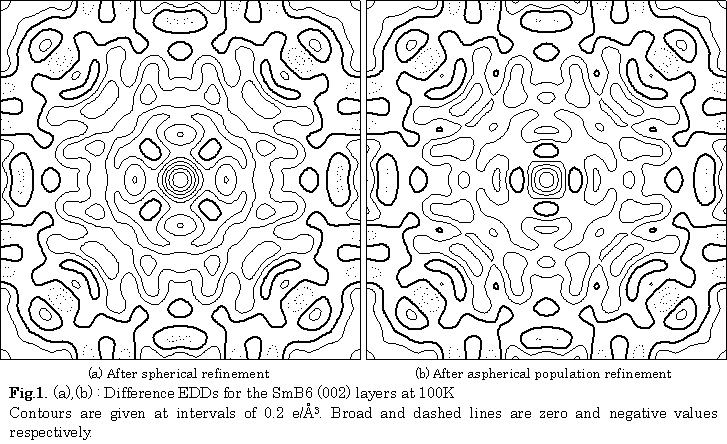00382
The 4f-EDD quantitative analysis in RB6 (R=La, Sm) by X-ray diffraction measurement and X-ray AO (atomic orbital) analysis
Graduate School of Materials Science and Engineering, Nagoya Institute of Technology* Omohi College, Graduate School of Materials Science and Engineering, Nagoya Institute of Technology, Japan** Graduate School of Advanced Sciences of Matter, Hiroshima University*** Graduate School of Science and faculty of Science, Tohoku University****
○Shiro Funahashi* Kiyoaki Tanaka** Fumitoshi Iga*** Akira Kunii****
Generally, it was thought difficult to observe EDD (electron density distribution) of compound containing heavy atoms and analyze 4f-EDD quantitatively. Tanaka et al. (2002) [1] succeeded in 4f-electron EDD analysis in CeB6 (Ce; f1) by X-ray AO analysis. EDD of isomorphic RB6 (R=La; f0, Sm; f5) crystals, LaB6 and SmB6, were measured at four temperatures. To establish 4f-EDD can be measured and be analyzed based on a quantum-mechanical models. Furthermore, we consider the relation of physical properties and EDD of each sample.
Oxford Cryostream system was employed for low-temperature measurements. For reducing absorption correction and extinction, samples were made spherical with radius about 35 mm, and measurement was performed keeping multiple diffraction effect minimum.
Analysis based on a quantum-mechanical model was carried out employing a weak-field model considering spin-orbit interaction by a least-square method (QNTAO by Tanaka).
We see in Fig.1 negative areas originating from 4f j=5/2 γ7 along <111> near the center are reduced after aspherical refinement (population of γ7 ;from 5/6 to 0.34(14)). We report a more detailed result in this conference.
[1]K.Tanaka and Y.Onuki, Acta Cryst, B58, 423-436(2002)
